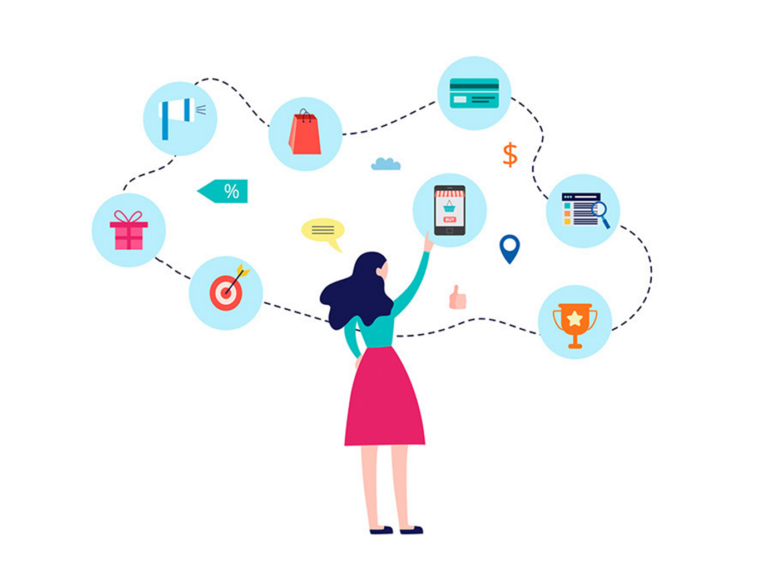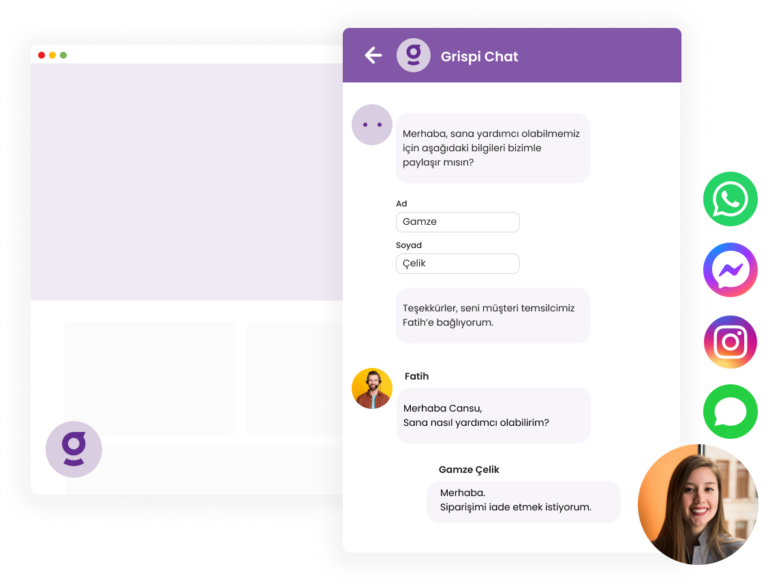Measuring and Increasing Customer Satisfaction
- 29/09/2023

Customer satisfaction measures how well a company meets customer expectations and how positively customers feel about their experiences with products or services. In this article, we’ve prepared a detailed guide on how to measure and improve customer satisfaction.
What is Customer Satisfaction?

Customer satisfaction reflects how customers respond to a company’s products or services after their needs have been met. It is an essential success metric for any business.
When a company satisfies its customers, it not only secures short-term success but also fosters loyalty, attracts new customers through referrals, and builds a strong brand reputation. On the other hand, negative experiences can spread rapidly via social media and damage your business’s image. For this reason, businesses should continuously focus on improving customer satisfaction.
Measuring customer satisfaction allows companies to assess user experience, improve service quality, and boost customer loyalty. So how do we measure it? Let’s explore.
Collect and Review Customer Feedback

Start by gathering and analysing customer feedback. This is the most direct way to assess whether customers are happy with your products or services.
Customer feedback also helps you identify and fix problems early. Taking feedback seriously and acting on it demonstrates that you value your customers’ opinions, which in turn increases loyalty and brand trust.
Responding constructively to feedback and making improvements based on it helps your business build a positive reputation.
Create Satisfaction Surveys

Satisfaction surveys help you better understand your customers’ opinions, expectations, and levels of satisfaction. Sending surveys shows that you care about customer input and are committed to improving.
Surveys are a vital tool for being customer-centric, responding to needs more effectively, and gaining a competitive edge. Companies should regularly send satisfaction surveys and use the data to drive continuous improvement.
Conduct Mystery Shopper Studies

Mystery shopping is a research method where trained individuals pose as regular customers to objectively evaluate the customer experience, service quality, and employee performance.
These studies are valuable for identifying areas of improvement, monitoring internal performance, and strengthening brand reputation. Businesses should conduct mystery shopper programs regularly and use the findings to enhance the customer journey.
Calculate Net Promoter Score

The Net Promoter Score (NPS) is a widely used metric for measuring customer loyalty and satisfaction. It gauges how likely customers are to recommend your company to others.
Typically gathered through a simple survey, the key NPS question is:
“How likely are you to recommend our business to a friend or colleague?”
Responses are scored from 0 to 10:
0–6: Detractors – Unhappy customers likely to spread negative feedback
7–8: Passives – Satisfied but unenthusiastic customers
9–10: Promoters – Loyal and enthusiastic customers who will recommend your brand
To calculate NPS:
NPS = % of Promoters − % of Detractors
A positive score indicates overall customer satisfaction; a negative score suggests there’s work to be done.
Analyze the Customer Journey

Customer journey analysis involves understanding the entire path a customer takes—from discovering your product to post-purchase experience. Key steps include:
- Identifying your target audience
- Mapping the customer journey
- Defining key experiences
- Pinpointing critical touchpoints
- Gathering data
- Evaluating feedback
- Creating improvement strategies
- Monitoring progress and outcomes
This process helps increase satisfaction, improve loyalty, and sharpen your competitive edge. It should be repeated regularly to sustain a customer-focused culture.
Deliver Personalized Experiences

Personalised experiences involve tailoring interactions and content to each customer’s needs, behaviours, and preferences. They deepen the customer-business connection and encourage loyalty.
Examples include:
- Product or service recommendations
- Personalised content
- Special offers and exclusive downloads
- Tailored communications
- VIP experiences or events
- One-on-one support
Personalisation makes customers feel valued and understood—boosting satisfaction and long-term engagement.
Empathise and Communicate with the Customer

Empathy allows you to understand your products or services from the customer’s perspective. It helps you evaluate experiences more objectively and respond more effectively.
Active communication ensures that customer feedback reaches the right teams, resulting in continuous improvement. Showing you care about what customers think gives your brand a competitive advantage.
Solve Problems Quickly and Effectively
Responding quickly and efficiently to issues raised by customers boosts your reputation and helps prevent repeat problems.
Fast and effective problem-solving improves your internal processes, reduces support burden, and increases customer trust.
Beyond this, strong issue resolution contributes to:
- Increased loyalty
- Operational efficiency
- Competitive positioning
- Business growth
- Reduced negative feedback
Continuously Improve Processes

Continuous process improvement is vital for maintaining and enhancing customer satisfaction. Markets and customer expectations change frequently, and your business must adapt to stay relevant.
Benefits of ongoing improvement include:
- Lower costs through better efficiency
- Fewer errors and complaints
- Greater customer trust and reliability
- More innovation and idea generation
- More stable and consistent performance
Continuous improvement must be driven by customer feedback and embedded into your organisational culture.
Train and Empower Your Employees

Since employees interact directly with customers, their performance greatly impacts the overall experience. Training and empowering your staff leads to:
- Higher service quality
- Increased satisfaction
- Prevention of recurring issues
- More effective feedback usage
- Stronger customer engagement
- Improved reputation and brand perception
- Innovation through frontline insights
Employee development is a strategic investment that drives both customer satisfaction and long-term success.
Leverage New Technologies

Businesses increasingly turn to technology to improve customer experience and strengthen their competitive advantage. Key benefits include:
- Faster service delivery
- Greater personalisation
- 24/7 availability
- Enhanced data analysis and feedback collection
- More effective communication
- Long-term growth and scalability
Adopting new technologies—and staying adaptable—helps your business evolve with customer expectations.
To improve your customer journey and manage customer relationships more easily, you can try Grispi free for 14 days.
Develop Analytics and Reporting Systems
It is critical for businesses to develop analytics and reporting systems for many important reasons:
Data-Driven Decisions:
Analytics and reporting systems provide businesses with a data-driven way to review and analyse customer experience and feedback. They give companies the ability to make more informed and effective decisions.Understanding Customer Behavior:
Analytics systems are important because they offer the ability to understand which products customers prefer, when they shop, and which channels they use.Identifying and Preventing Problems:
Analytical systems monitor customer complaints and feedback, allowing businesses to address issues quickly and increase customer satisfaction.Customer Feedback:
Analytics and reporting systems help businesses better understand customer needs and expectations, as they enable the regular collection and analysis of customer feedback.Measurable Results:
Reporting systems can be used to track the success of changes and make adjustments as needed.Competitive Advantage:
A data-driven approach helps you deliver better service than your competitors.Continuous Improvement:
Ongoing improvement based on data and feedback is one of the keys to increasing customer satisfaction.
We have summarised all the details you need to know about customer satisfaction measurement. You can continue to follow us for more useful content like this.
Contact Us
Fill out the form for detailed information and demo account, let us call you.
